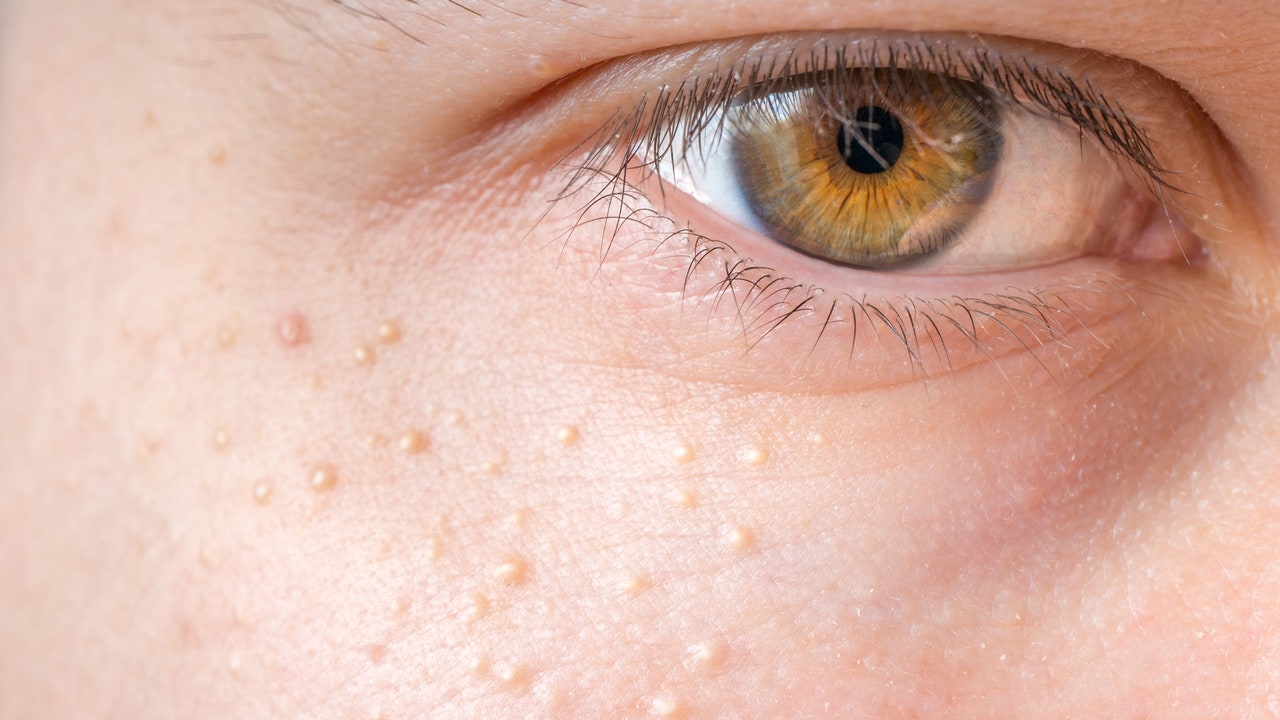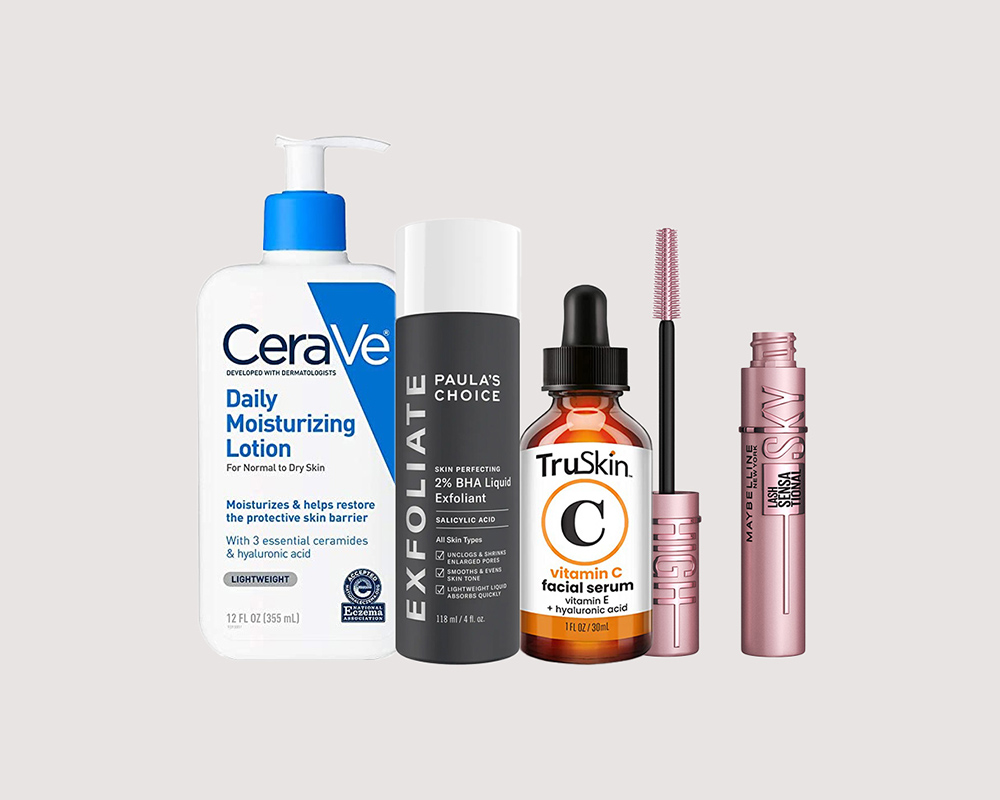
[ad_1]
Milia appear out of nowhere: a slew of tiny and painless — albeit pesky nonetheless — white bumps. They’re minuscule, almost undetectable even, but you figure you’ll try to pop them anyway because textured skin isn’t what you’re going for. But when you do give them a squeeze, nothing happens — no puss, no blood, nada. It’s a totally unexplainable popping fail, so naturally, you begin to wonder what the deal is.
The deal, for those wondering, is known as milia, which, in short, are cysts made of keratin, says New York City-based board-certified dermatologist Shari Marchbein, MD. She explains that keratin is a protein in the outermost skin layer called the stratum corneum, which forms your hair, nails, and skin.
South Florida-based board-certified dermatologist Jeffrey Fromowitz, MD, explains that pimples come in two variants: inflammatory papules (pustules, nodules, cysts) and non-inflammatory lesions (open and closed comedones, like blackheads and whiteheads). While milia do indeed look like whiteheads, that’s where most of the comparisons come to a halt.
“Milia is where the skin grows completely over a pore and the skin debris is trapped beneath the surface,” he says. “So while it looks like a whitehead, it is difficult to remove and often requires a tool to open the skin’s surface and pop out the hard white core.”
To make matters even more confusing, “The etiology for both is similar, so it is common to have acne and milia together,” says Philadelphia-based board-certified dermatologist Michele Farber, MD. Unlike acne, however, milia can develop without rhyme or reason and cannot be extracted the way typical blemishes can, Dr. Marchbein says.
Read on for the full deep dive on milia and how you can treat those little bumps.
Meet the experts:
- Shari Marchbein, MD, is a board-certified dermatologist based in New York City.
- Jeffrey Fromowitz, MD, is a board-certified dermatologist in Boca Raton, Florida.
- Michele Farber, MD, is a board-certified dermatologist with the Schweiger Dermatologist Group in Philadelphia.
- Sejal Shah, MD, a board-certified dermatologist in New York City.
Who gets milia?
According to Dr. Marchbein, the tiny white bumps of milia can happen to just about anyone regardless of age or skin type, but they are more prevalent in those with chronic sun damage. “[They’re] commonly found on the face, especially the nose, cheeks, and around the eye area [and can] be seen in all age groups from babies to adults,” she says.
[ad_2]
Source link






